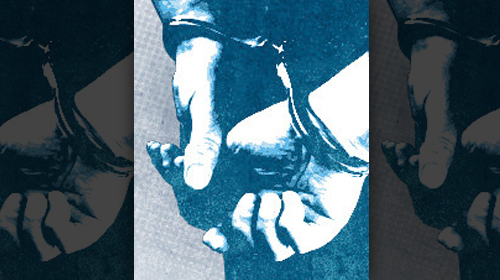
Today, the U.S. has the highest incarceration rate of any country in the world. With over 2.3 million men and women living behind bars, our imprisonment rate is the highest it’s ever been in U.S. history. And yet, our criminal justice system has failed on every count: public safety, fairness and cost-effectiveness. Across the country, the criminal justice reform conversation is heating up. Each week, we feature our some of the most exciting and relevant news in overincarceration discourse that we’ve spotted from the previous week. Check back weekly for our top picks.
It’s Time to Fix Draconian Federal Drug Penalties
Three bills pending in the U.S. Senate would expand the list of substances regulated as a Schedule I drug by the DEA to include chemicals used to create synthetic drugs commonly known as bath salts, synthetic marijuana and synthetic hallucinogenics. All three bills have passed out of the Senate Judiciary Committee. Andrea Strong of Families Against Mandatory Minimums makes a persuasive case for why reforming federal drug penalties should be a higher priority than adding more drugs to the list.
Maryland: When ‘Life means life’ Doesn’t Mean Justice
The Maryland parole board has recommended 53 lifers for release (out of 2,500 eligible prisoners), but the governor has only released two of them. Walter Lomax of the Maryland Restorative Justice Initiative, in an op-ed for the Washington Post, believes it’s time to take the governor out of the release process.
New York: Out of Jail, and Into a Job
A New York program that teaches ex-prisoners job skills is having success at cutting recidivism. The program sends trains ex-prisoners how to behave in a workplace, places them in jobs –mostly in city agencies doing maintenance or janitorial work – and gives them a paycheck at the end of each day. On a weekly basis, they meet with a job coach who grades their performance and offers advice. A study of the program found that for people who started within three months of getting out of prison, the program reduced recidivism by 16 to 22 percent compared to a randomized control group.
Vermont Bill Calls for Study of Prison Population by Race
Vermont lawmakers introduced a bill to help them understand why African-Americans make up 10.3 percent of Vermont’s prison population despite comprising just 1 percent of residents in the nation’s second-whitest state. The percentage of the prison population that is African-American has doubled since the Department of Corrections first provided data on race in 2001.
Washington: Lawmakers Weigh Major Changes for Parole, Probation
Legislators in Washington State will soon decide whether to adopt a parole and probation reform modeled after Hawaii’s successful HOPE program. The program would create swift, certain and brief jail sentences for probationers and parolees who fail a drug test or miss a meeting with their corrections officer. Participants in Hawaii’s program showed an 80 percent drop in positive drug tests, and the recidivism rate among those on probation dropped precipitously.
Learn more about overincarceration: Sign up for breaking news alerts, follow us on Twitter, and like us on Facebook.

